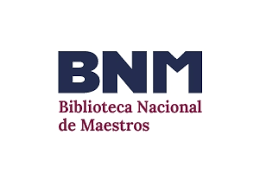REFLECTIONS ON VIRTUAL EDUCATION IN BIOLOGICAL AND AGRICULTURAL SCIENCES
DOI:
https://doi.org/10.63207/f3x80h62Keywords:
virtual education, biological sciences, agricultural sciences, mixed methodsAbstract
Distance education arises from the need to provide training to students who have difficulties attending classroom training. This learning method was and is used not only as an auxiliary and/or complementary tool, but also as an effective learning that helps people of any age and gender. In the fields of biological and agricultural sciences, its application offers specific opportunities and challenges. This study aimed to identify the main advantages and disadvantages of Virtual Education (VE) recognized by students and teachers of these university fields, to know their experiences and opinions regarding the incorporation of this modality in undergraduate training, and to critically reflect on the teaching-learning process in virtual environments. To achieve these objectives, 75 open and closed-response online surveys were carried out with undergraduate students and teachers of Agronomy and Biology majors. 72% of those surveyed considered a mixed modality feasible, where practical activities (field and/or laboratory) being in-person and theoretical activities (including consultation classes and midterm assessments) being delivered online. However, there is a clear need to adopt pedagogical techniques that promote better communication and interaction between teachers and students, as well as among peers.
Downloads
Downloads
Published
Issue
Section
License
Copyright (c) 2025 Valeria Santa, Claudia Dellafiore

This work is licensed under a Creative Commons Attribution-NonCommercial-ShareAlike 4.0 International License.
Política propuesta para revistas que ofrecen acceso abierto
Aquellos autores/as que tengan publicaciones con esta revista, aceptan los términos siguientes:- Los autores/as conservarán sus derechos de autor y garantizarán a la revista el derecho de primera publicación de su obra, el cuál estará simultáneamente sujeto a la Licencia de reconocimiento de Creative Commons CC BY-NC-SA 2.5 AR que permite a terceros compartir la obra siempre que se indique su autor y su primera publicación esta revista.
- Los autores/as podrán adoptar otros acuerdos de licencia no exclusiva de distribución de la versión de la obra publicada (p. ej.: depositarla en un archivo telemático institucional o publicarla en un volumen monográfico) siempre que se indique la publicación inicial en esta revista.
- Se permite y recomienda a los autores/as difundir su obra a través de Internet (p. ej.: en archivos telemáticos institucionales o en su página web) antes y durante el proceso de envío, lo cual puede producir intercambios interesantes y aumentar las citas de la obra publicada. (Véase El efecto del acceso abierto).
![Osolev, A. (s.f). Textura 120 [Fotografía]. En: https://www.flickr.com/photos/13796443@N05/6833625332](https://www2.hum.unrc.edu.ar/ojs/public/journals/8/cover_issue_309_es.png)











